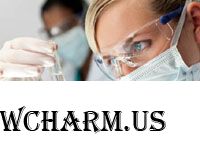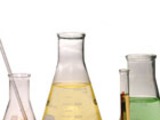Ingredients with bad reputation: harm and … the proved harm

To parabens gets much now. If you see the following names on the label: methylparaben (Methylparaben), propilparaben (Propylparaben), ethylparaben (Ethylparaben), butylparaben (Butylparaben), – that it too all parabens. For what they are allowed in composition of cosmetics? These are very effective preservatives, they kill bacteria, prevent from formation of a fungus in cosmetic because of which skin can suffer. But what so is not pleasant in parabens recently? These preservatives make from benzoic acid (substance which very many plants contain), and this acid causes hormonal violations and also cancer diseases.
Sounds terribly, agree. But there are also good news. Though benzoic acid is also substance with very high estrogenic activity (as causes changes at the hormonal level), but dangerous to the person it can become only in very high doses. In cosmetics of concentration of parabens are not so high that it could cause hormonal problems. Besides, if the majority of plants contains this substance, then, you see, there are dangerous practically all natural vegetable. But for some reason nobody speaks about it. As for the fact that parabens provoke cancer, the scientific community discredited the researches which found communication between parabens and oncology not so long ago. The scientific committee of the European Union published specifications on an occasion of use of parabens in cosmetics recently. In it it is told that "it is possible to call impact which is made on health by the parabens which are contained in cosmetics insignificant". The committee came to a conclusion that only about 1% of the parabens which are contained in cosmetics can get into our organism. This minute quantity which cannot render fatal destructions.
There are only fears about whether really parabens put in cream not so critically much. With it the issue is resolved so: in the list of components of means parabens have to be at the very end of the list, it means that they in small concentration. If parabens are closer to the beginning of the list, it is an occasion to think.
And one more circumstance. Cream cannot be without preservatives at all. And insignificant impact of parabens on an organism and skin much less dangerously, than influence of bacteria, a fungus and infections which can develop in cream without preservatives.
Sodium laurylsulphate (Sodium Lauryl Sulfate, SLS)
This component has the good cleaning properties. And the main claims to SLS – it irritates the skin, is the reason of a hair loss and even cancer. Whether they are proved?
 Laurylsulphate of sodium is the component which is really very irritating the skin. It is proved by scientists. And when they want to show, how irritating the studied substance is, they often compare indicators to SLS. Products with Laurilsulfat of sodium cause negative reaction of skin and therefore can be present only at the washed-away products. Admissible concentration of substance in cosmetics which will not cause changes on skin, - no more than 1%. Though whether it is worth risking? Now enough other cleaning components less irritating are invented. By the way, other sulfates of sodium irritate the skin less and it is much softer and safer.
Laurylsulphate of sodium is the component which is really very irritating the skin. It is proved by scientists. And when they want to show, how irritating the studied substance is, they often compare indicators to SLS. Products with Laurilsulfat of sodium cause negative reaction of skin and therefore can be present only at the washed-away products. Admissible concentration of substance in cosmetics which will not cause changes on skin, - no more than 1%. Though whether it is worth risking? Now enough other cleaning components less irritating are invented. By the way, other sulfates of sodium irritate the skin less and it is much softer and safer.As for other claims to SLS, there are no proofs and scientific research about the fact that this ingredient can cause an alopetion (hair loss) and cancer.
Mineral oil
Supporters of natural cosmetics consider that this ingredient it is necessary to avoid at any cost as mineral oils are derivative of oil. What in it dangerous?
Actually, the statement that mineral oils are not natural – are a little doubtful. Oil from which they turn out, quite natural substance. Besides, mineral oils – it does not mean that you will put clean oil on a face. These are different things!
It is also worth telling that there are several types of oil products. And that which is used in cosmetics is safe. There are no proofs that mineral oils cause cancer. That mineral oils can make for skin – so it to create the good protective barrier which is preventing irritations, slowing down moisture loss. And the only bad point it is possible to call that mineral oils can provoke appearance of an acne as clog up pores a little. Though at the same time moisturize the skin enough and do it soft.
Silicones
Silicones are used very often in cosmetics. It is, in fact, that saving ingredient which provides to means good sliding on skin, does texture of cosmetics soft and silky. On labels often silicones act under the names dimethicone and cyclomethicone. Besides, silicones form a protective barrier to skin, keeping it humidified. But because of this protective barrier silicones began to call komedogenny ingredient, and all criticism of silicones belongs to these its properties.
However silicone is not komedogenny! It really forms a protective barrier which not only blocks penetration into leather of some ingredients of cosmetics, but also dirt, by the way. Most of people perceive silicones and do not react to their content in cosmetics in any way. And only some irritation – here possible side effect. And for the rest silicone in cosmetics is not dangerous.
 Vaseline
Vaseline Vaseline (Petrolatum or Vaseline) has the bad glory, as well as mineral oils, generally because this derivative of oil. And the European Union forbade the majority of oil products in cosmetics as they cause cancer.
However, most likely, this ban does not extend to vaseline as there is enough creams from the European producers with vaseline in structure. As for communication between vaseline and cancer, I did not manage to find any serious and scientific proofs to it. Vaseline still is good moistening and, probably, the most available moistening means at the price. It besides reduces inflammation of skin and even often heals.
Propylene glycol
Propylene Glycol is necessary in cosmetics as the moistening component. It can scoop moisture from the environment and deliver it in skin. It also helps to deliver other active components which are contained in creams and serums in skin. Why we now sometimes hear about bad reputation of this "magic" ingredient?
Opponents of propylene glycol say that it is dangerous as it causes problems with a liver, kidneys and also provokes cancer. But again it is worth thinking, and whether so it?
Really, propylene glycol is in fact the antifreeze, a product harmful to health causing cancer. But only that antifreeze about which harm speak is a propylene glycol in 100% of concentration. And in cosmetics such component contains in scanty doses (as a rule, less than 5%). Such concentration are not dangerous. Will calm you and the fact that propylene glycol does not contain in the list of cancerogenic substances which is registered by the European Parliament.
Talc
Talc (or water silicate of magnesium) is the mineral used in cosmetic products for improvement of a type of products. It also has the properties absorbing moisture.
In 1990 the research according to which the conclusion about communication between talc and ovarian cancer was drawn was published (though researchers then said that experiences not final and tests will continue). Generally, it turns out that still really it is possible to call talc not absolutely studied ingredient for internals, therefore if you had a concern, then do not apply means to intimate hygiene with talc content. Though, perhaps, it is worth being more attentive and at use of any cosmetics with talc.
Copy the code and insert into a window of creation of record on LiveInternet, previously having included the Source mode there.
HTML-code: 
|
|
| The BB code for forums: |
How will it look?
wowcharm.us → Ingredients with bad reputation: harm and … the proved harm

|
Parabens To parabens gets much now. If you see the following names on the label: methylparaben (Methylparaben), propilparaben (Propylparaben), ethylparaben (Ethylparaben), butylparaben (Butylparaben), – that it too all parabens. For what they are allowed in composition of cosmetics... Read more: |
| "Cold, or krio wrappings | | | Such useful celery: for appearance" |
|
Other discussed materials:
The 67th annual ceremony of delivery of awards of "Grammy", Part 2.
And again. Hello! I am a Hero of the anniversary. No, today not my birthday, but ten years, as I on wowcharm. Here time flies...
St. Valentine's Day? No, it tomorrow, and today we purely women's company celebrate the Day of Girlfriends.
Meat "in a captain's way"
|









